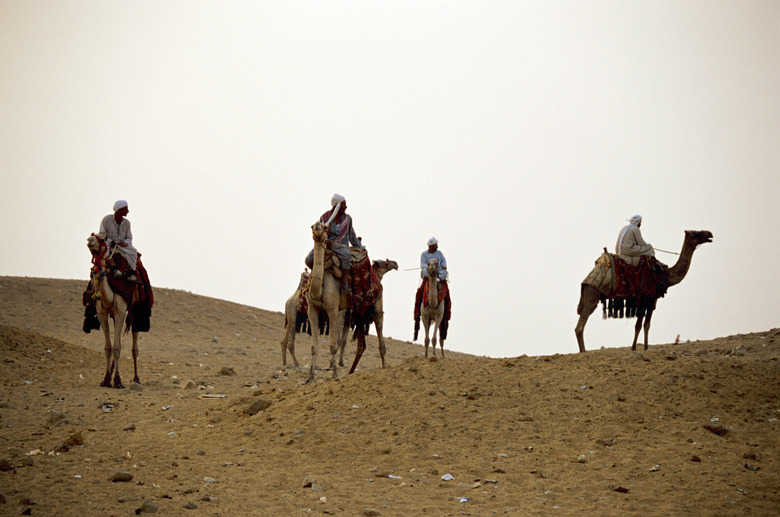Importance Of The Eastern Desert In Ancient Egypt
Ancient Egyptian culture proliferated over thousands of years due to the Nile River providing a source of food, water and transportation in an otherwise desert landscape. The Eastern Desert to the east of the Nile was home to nomads before and during the pharaonic era, and contributed to the development of Egyptian society through its abundant minerals and overland routes to the Red Sea.
Geography and Physical Characteristics
Geography and Physical Characteristics
The Eastern Desert comprises the area between the Nile River and the Red Sea, beginning at the north by the Mediterranean coastal plain. The desert stretches south in a limestone plateau before breaking into cliffs rising 1,600 feet, eroded from wadis (dry river valleys) that make passage especially difficult. The sandstone plateau south of the city of Qinā is scored with numerous ravines, with some usable routes. The desert terminates in the Red Sea Hills, a range of interlocking systems with several peaks rising to 6,000 feet. The total area encompasses nearly a quarter of present day Egypt's surface area.
Source of Mining
Source of Mining
The Eastern Desert served as an important mineral resource for the ancient Egyptians. Limestone, sandstone, granite, amethyst, copper and gold were among the stones and metals mined from the desert, and the remnants of thousands of quarries, camps and roads are scattered through the region's mountains and wadis. Stone played a significant role in the development of Egyptian culture, by allowing for the monumental structures the society is remembered for, while the metal mined provided raw material for tools, jewelry and ornamentation. A geological map dated to the 12th century B.C., known as the Turin Papyrus, marks locations of quarries, rock types and routes in the desert, underscoring the importance of mining over the course of ancient Egyptian civilization.
Trade Network
Trade Network
Much of what is known about the Eastern Desert is derived from inscriptions found at archaeological sites chronicling expedition leaders and titles. Historians believe that seafaring networks were established in the Red Sea during the beginning of the Old Kingdom era in order to reach Sinai and Punt. The more passable wadis provided overland routes for mining and trade expeditions, but texts indicate that the nomads present in the desert were considered a threat as early as the Sixth Dynasty.
Archaeological Finds
Archaeological Finds
In addition to tools and camp remnants from old quarry sites, the Eastern Desert is also home to numerous sites bearing rock art or petroglyphs. Boat petroglyphs from predynastic times and later are found at 75 percent of surveyed sites, surpassing human and animal representations. During Pharaonic times, boat parts were taken by caravan through Wadi Hammamat to be assembled on the Red Sea coast, and the desert route subsequently reflects advanced boat technology such as a mast and sail instead of merely hulls like those depicted at earlier sites. These Eastern Desert petroglyphs help reveal how significant watercraft were within ancient Egyptian culture.
Cite This Article
MLA
Sanders, DaVaun. "Importance Of The Eastern Desert In Ancient Egypt" sciencing.com, https://www.sciencing.com/importance-eastern-desert-ancient-egypt-12519/. 24 April 2017.
APA
Sanders, DaVaun. (2017, April 24). Importance Of The Eastern Desert In Ancient Egypt. sciencing.com. Retrieved from https://www.sciencing.com/importance-eastern-desert-ancient-egypt-12519/
Chicago
Sanders, DaVaun. Importance Of The Eastern Desert In Ancient Egypt last modified March 24, 2022. https://www.sciencing.com/importance-eastern-desert-ancient-egypt-12519/
